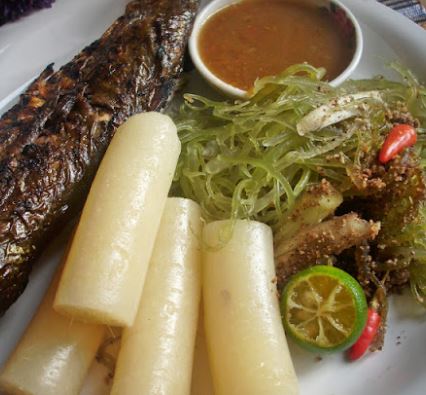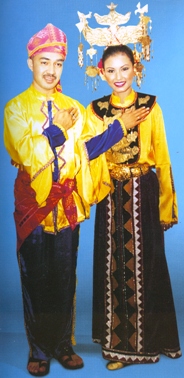BAJAU
HISTORY
The Bajau are the second largest bumiputra in Sabah. The Bajau are mostly Muslims and come from two ethnic groups not far from Bajau on the east coast and Bajau on the west coast. They were among the well-known sailors of ancient times before the colonial invaders in Sabah. The Bajau were found to have the skill of building a boat or a vessel of moderate size in some historical records.
The Bajau were also savvy sailors whose main activities were pirates and fishing. Bajau people also have horseback riding skills and this makes them among the most successful in Sabah. Their skills make them famous in Sabah and are named "Eastern Cowboys" or "Sabah Cowboys".The Bajau people on the west coast of Sabah mostly settle from Kota Kinabalu to Kota Belud.
RELIGION
In the old days, the bajau community had its own beliefs. They believe that there is a creature called "Piston" is considered to have a high power and is surrounded by demons with enthusiasm. However, after the arrival of the Islamic religion, the people of bajau have embraced the religion of Islam and practiced the lives of its people. However, the practice of ancient practice is still practiced even though it is contrary to the religion of Islam.
LANGUANGE
- aku - aku, saya
- angai - kenapa
- ahok - ya
- embal niak - tak ada
- atoggol - lama
- amangan - (sedang) makan
- lingantuh - lapar
- palakkas - cepat, lekas
- palastik - plastik
- amolek - pulang
- ka'ah - kau, engkau, awak , anda
- kita/kitam - kita
- ka'am - kamu
- kami - kami
- bilahi - suka
- aku - aku, saya
- angai - kenapa
- ahok - ya
- embal niak - tak ada
- atoggol - lama
- amangan - (sedang) makan
- lingantuh - lapar
- palakkas - cepat, lekas
- palastik - plastik
- amolek - pulang
- ka'ah - kau, engkau, awak , anda
- kita/kitam - kita
- ka'am - kamu
- kami - kami
- bilahi - suka
FOOD
KIMA
Kima is a species of sea shellfish and is found in several species, including shells, kima bohe 'and sollot-sollot (small in size and inserted in the cracks of stone surfaces). Kima is made into a traditional Bajau food tradition. The kima can be eaten raw (inta ') after being sliced or cut into small pieces and mixed with lemon juice and pepper and other spices according to taste. It can also be cooked with vegetables.

SAGOL
Traditional food cuisine that uses fish fillets (usually stingrays, shark fish and bumpal fish, generally fish with large hearts) chopped and cooked with turmeric. To make sagolana, the shark, spleen or buntal spawn first so that it is easy to clean the 'langnges' ie coarse layer on yu and pari skin, or 'iting' ie 'thorns' in the bumpal fish. The rake (cooked half-cooked) is also made to facilitate the crushing of fish and mixed with turmeric that has been shredded. There are two types of soy sauce / ementagol, ie dry sagol / Sinagol (no gravy) and sagol / Sinagol wet (good).

PUTU
The food in the form of cassava which was grated and milked then steamed. It tastes like sweet potatoes mixed with flour.

TOMPEK
The food is in the form of tapioca which is shaved and squeezed with water. It is then fried without oil in the pan, so it turns yellowish. Generally, the traditional food of the Bajau people is seafood and other foodstuffs and other fields. Cooked foods are either boiled, fried, baked and baked

Bajau Bela Traditional Traditions The Belud City is known as "Badu Sipak". The name of the traditional apparel type of the Kasu Bajau Shine at the Orchard Road was originally known as "Alal Bimbang"
Traditional clothing of the Bajau tribe. The women dressed in a scarf blouse and an extracted sarong cloth, mandrel neck jewelry and an occasional head jewelry. Bajau men dress shirts of Cakak Musang, pants, side and headband. The Bajau people, (also written as Badjao, Badjaw or Badjau) are indigenous ethnic groups from Malaysia and the Southern Philippines and are recognized as the second largest ethnic group in the state of Sabah.
BADU SIPAK

ART
Traditional dance culture among Bajau communities is Dance Limbai, Dalling - Dalling, Igal - Igal and Runsai.
LIMBAI AND RUNSAI DANCE
Limbai dance is usually performed while welcoming the arrival of the bride who is paraded into the bride's house. As soon as the wedding party arrives, the parade is paused, then Limbai dance is performed in front of the bride. It is a special ceremony as a gesture to invite the groom to go home to perform ceremonial consent of marriage.

DALLING DALLING AND IGAL IGAL DANCE
These dances are usually performed at parties such as wedding and accompanied by traditional musical instruments. The difference with dance dalling is accompanied by musical instruments such as gabbang and a singer.

CELEBRATION
REGATTA LEPA
Lepa Regatta celebration is celebrated in April every year in Semporna, Sabah. It is an important celebration in the Bajau Semporna community calendar and can be regarded as their 'feast'. The Lepa Regatta celebration was included in the 'Malaysian Water Festival' calendar and is now one of the annual events in Malaysia


MUSIC INSTRUMENTAL
SOMPOTON
Sompoton is usually played during occasions or official ceremonies.

TONGKUNGON
Tongkungon is usually played as leisure during leisure.

SUNDATANG
Sundars are usually played during party events. Sounds are a stringed musical instrument and usually 2 strings will be used to produce this musical instrument. The wood used to make the bean should also use hardwood to make it durable.

GENDANG
Drums are used for accompanying music along with other traditional tools such as Belintangan and drums are also used by some communities when making medical treatment ceremonies.

KULINTANGAN
It is widely used and played by the Bajau and Kadazan-Dusun tribesmen during the celebration of celebrations, festivals or official ceremonies.

BY : AYU ATIKAH


Comments
Post a Comment